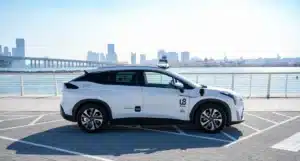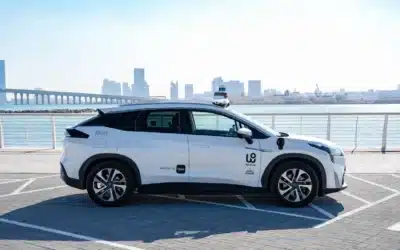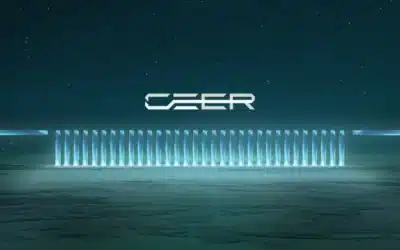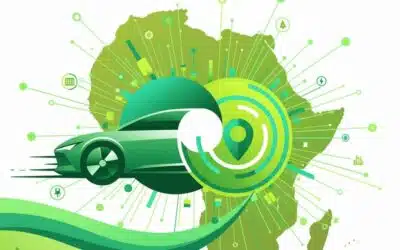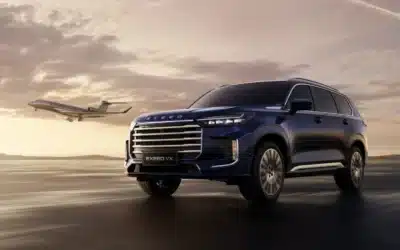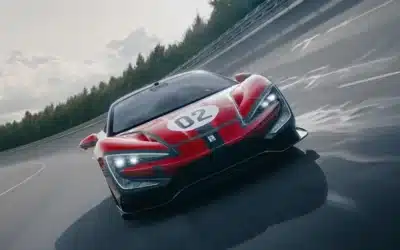
There’s furious competition going on under the hoods of electric vehicles. Advancing battery technology to deliver better range and charging speed as well as minimising the use of unsustainable materials is creating a white-hot battleground between battery and car manufacturers.
Extending the capabilities of lithium-ion batteries
The majority of EVs currently use lithium-ion batteries and this is likely to be the case for a few more years. This is despite not delivering cutting-edge performance and requiring the use of rare earth metals such as lithium and cobalt. They are also prone to some degradation over time.
But scientists at the University of Colorado Boulder have identified a novel approach to enhance the longevity and performance of lithium-ion batteries, promising significant advancements for EVs and energy storage solutions.
Using a powerful X-ray machine at the U.S. Department of Energy’s Argonne National Laboratory in Illinois, the research team uncovered the molecular mechanisms contributing to battery degradation over time.
The research, led by Professor Michael Toney of CU Boulder’s Department of Chemical and Biological Engineering, revealed that hydrogen molecules from the battery’s electrolyte inhibit the movement of lithium ions to the cathode, essential for maintaining the electric current. This disruption results in diminished battery capacity—a phenomenon well-recognised but previously not fully understood.
Through detailed analysis, the team discovered that hydrogen molecules occupy sites on the cathode that lithium ions typically bind to, thereby reducing the number of lithium ions able to contribute to the electric current. By addressing this finding, the researchers suggest that applying a special coating to the cathode could significantly improve the battery’s performance, potentially increasing the range of electric cars by up to 60%.
This advancement is particularly crucial for the EV industry, which faces challenges such as limited driving ranges, higher production costs, and shorter lifespans of current battery technology. Currently, a typical all-electric vehicle can travel approximately 250 miles on a single charge, about 60% of the range seen in gasoline-powered vehicles.
Given that the transport sector accounts for 28% of greenhouse gas emissions, extending the range of EVs and reducing their costs are urgent needs. Many automakers have committed to phasing out gasoline cars and increasing the production of EVs in response to climate change concerns.
An additional focus of the CU Boulder study is the reduction of cobalt in lithium-ion batteries. Cobalt, a scarce and expensive mineral, is central to current battery designs but presents significant ethical and environmental issues. The majority of the world’s cobalt is sourced from the Democratic Republic of Congo, where mining has been linked to severe human rights abuses, including child labour.
Scientists have been exploring replacements such as nickel and magnesium for cobalt. However, these alternatives have shown even higher rates of self-discharge, further complicating efforts to find a sustainable solution.
“We are helping to advance lithium-ion batteries by figuring out the molecular-level processes involved in their degradation,” stated Professor Toney. “Having a better battery is very important in shifting our energy infrastructure away from fossil fuels to more renewable energy sources.”
Researchers at Stanford University have also been busy looking at how to improve lithium-ion batteries. A team at the SLAC-Stanford Battery Center has conducted a collaborative study with the Toyota Research Institute, the Massachusetts Institute of Technology (MIT), and the University of Washington to adapt the way that lithium-ion batteries are manufactured to extend their overall life.
Traditionally, the manufacturing process for lithium-ion batteries includes a 10-hour initial charge at a low current. This step is deemed essential to mitigate the early loss of lithium, which is believed to extend the overall lifespan of the battery. However, this practice is notably both time-consuming and expensive, prompting researchers to question its efficacy and explore alternatives.
The Stanford-led team undertook an experiment to charge the batteries at a high current for just 20 minutes instead. This method did result in a significant initial loss of lithium. Surprisingly, however, it yielded a remarkable average life span extension of 50% for the EV batteries.
Carbon fibre batteries?
Researchers at Chalmers University in Sweden have made significant advancements in carbon fibre structural batteries, which combine energy storage with load-bearing properties. This innovation could revolutionize electric vehicles by integrating batteries into their structures, reducing weight and improving energy efficiency.
The latest version of the battery has an energy density of 30 Wh/kg and stiffness comparable to aluminium, though still lower than traditional lithium-ion batteries. However, the weight reduction compensates for this, potentially extending EV range by up to 70%.
By incorporating energy storage into a vehicle’s structure, the need for heavy components like current collectors and conflict metals such as cobalt and manganese is minimized. This dual-purpose material significantly enhances efficiency, safety, and sustainability. The technology is the most advanced in the field to date, building on research that began in 2018, when carbon fibre was first shown to work as electrodes in lithium-ion batteries.
Structural batteries offer an exciting future for electric cars, drones, and other devices, enabling lighter, more efficient designs that support the transition to cleaner energy technologies. As development continues, these batteries could play a critical role in advancing sustainable transportation.
Solid state batteries
Solid-state batteries are a next-generation technology poised to revolutionize EVs. Unlike traditional lithium-ion batteries, which use liquid electrolytes to transfer charge between the anode and cathode, solid-state batteries use a solid electrolyte. This design provides several advantages, including higher energy density, improved safety, and faster charging times.
One of the key benefits of solid-state batteries is their potential for greater range. With higher energy density, these batteries can store more energy in the same space, allowing electric vehicles to travel further on a single charge..While traditional lithium-ion batteries provide ranges typically between 320 – 480 kilometers, solid-state batteries could push ranges up to 800 kilometers or more, depending on advancements in the technology.
Another advantage is safety. Lithium-ion batteries pose risks of overheating and fire due to their liquid electrolytes, which are flammable. Solid-state batteries, by contrast, are less prone to these risks because the solid electrolyte is non-flammable, improving overall safety and longevity.
Several companies are leading the development of solid-state batteries, with some aiming to commercialize them by the end of the decade. Toyota has made significant investments in the technology and aims to launch solid-state-powered EVs by 2027. QuantumScape, a U.S.-based startup, is another key player, having made strides in creating viable solid-state batteries with long-term durability. Volkswagen and BMW are also heavily invested in the technology, partnering with startups and academic institutions to accelerate research and development.
The battery manufacturing market leaders, CATL and BYD, are also working on solid-state battery development. However, both companies are still more focused on lithium-ion and lithium-iron-phosphate technologies in the near term while solid-state technology matures.
Charging time
Another area of battery competition is super fast charging.
StoreDot is a frontrunner in the development of extreme fast charging (XFC) silicon battery technology for EVs. It has recently succeeded in creating a prismatic battery cell capable of charging from 10% to 80% in just 10 minutes.
StoreDot’s engineering prowess has enabled these XFC cells to provide 100 miles of charge within just five minutes, with future targets set to reduce this time to four minutes by 2026. Uniquely, these batteries do not exhibit accelerated degradation, a common issue usually associated with fast charging.
StoreDot’s XFC cells promise a combination of high energy density, critical for high-performing EV batteries, and robust reliability without an increased cost. This technological advancement is set to make EVs more affordable for manufacturers and, by extension, consumers.
Additionally, StoreDot has partnered with 15 original equipment manufacturers (OEMs) to extensively test and integrate its prismatic XFC battery cells into the existing EV architecture, potentially transforming the market landscape.
The newly unveiled battery technology will play a crucial role in reducing “charging anxiety” among potential EV customers. Recent surveys from the UK and Germany reveal that over half of respondents are hesitant to transition to electric vehicles primarily due to concerns over charging times. This is despite significant investments by nations in expanding charging infrastructure to cater to the burgeoning demand.
These are only some examples of innovation taking place in the battery sector. Given that manufacturers need to accelerate the roll-out of EVs over the rest of this decade, anything that can sway drivers to make the switch is certain to be a very high priority. Range and speed of charging are totally crucial to achieving this.

